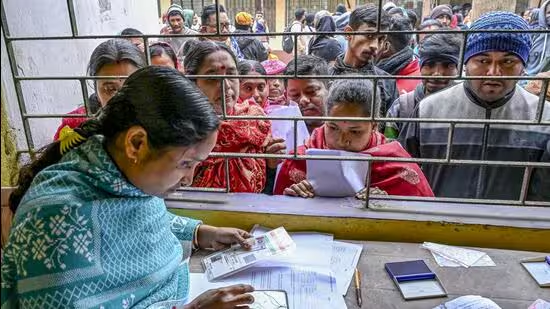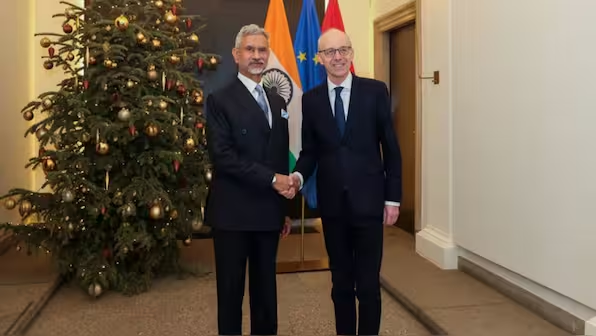Poverty to Progress: A Detailed Analysis of India's Multidimensional Poverty Report
- MGMMTeam

- Feb 5, 2024
- 4 min read
Introduction
India, led by Prime Minister Shri Narendra Modi, has achieved a momentous victory in the battle against multidimensional poverty. The recent Discussion Paper released by NITI Aayog not only illuminates the key findings but also delves into the causes, consequences, and strategies that underpin this commendable achievement.

Defining Multidimensional Poverty
Multidimensional poverty provides a comprehensive understanding of deprivation beyond mere monetary constraints. It encompasses the challenges faced by households across three crucial dimensions: health, education, and standard of living, assessed through 10 key indicators. These indicators encompass child mortality, nutritional status, educational attainment, school attendance, access to basic amenities such as clean cooking fuel, sanitation, safe drinking water, adequate housing, reliable electricity, and possession of essential assets.
The Multidimensional Poverty Index (MPI) serves as a widely recognized, high-resolution measure of non-monetary poverty at the household level. Implemented in over 100 developing countries, the MPI captures the same dimensions and indicators to assess the multifaceted challenges encountered by diverse households across various nations.
Key Findings of the NITI Aayog Report
Remarkable Decline in Multidimensional Poverty: From 29.17% in 2013-14 to an impressive 11.28% in 2022-23, India has witnessed a substantial reduction in the Multidimensional Poverty Index (MPI). This reduction of 17.89% signifies that 24.82 crore people have escaped multidimensional poverty in the last nine years.
State-wise Progress: Uttar Pradesh leads with the highest decline in poverty, witnessing nearly 6 crore people emerging from poverty in the last nine years. Following Uttar Pradesh, Bihar, Madhya Pradesh, and Rajasthan have also made significant strides in poverty reduction.
Accelerated Rate of Decline: The report projects that India is on track to achieve single-digit poverty levels by 2024. The rate of decline in multidimensional poverty has accelerated, reaching below 10%, a remarkable feat considering that more than 50% of the population faced poverty around 2005.
Methodology and International Collaboration: The NITI Aayog's MPI employs the Alkire and Foster (AF) methodology, with technical input from the Oxford Policy and Human Development Initiative (OPHI) and the United Nations Development Program (UNDP). This collaboration ensures an accurate and globally aligned assessment of poverty.
Government Initiatives and Impact: The report acknowledges the government's initiatives, such as Poshan Abhiyan and Anaemia Mukt Bharat, for their role in improving health facilities and reducing deprivation. These initiatives align with Sustainable Development Goal (SDG) 1.2, aiming to halve poverty in all dimensions.
Consequences of Multidimensional Poverty
Understanding the consequences of multidimensional poverty is crucial for appreciating the impact of poverty reduction efforts. Health, education, and living standards are interconnected, and improvements in these dimensions contribute to overall societal well-being.
Strategies for Reduction of Poverty
Effective strategies for reducing multidimensional poverty encompass various aspects of lifestyle. Emphasizing healthy eating habits, regular physical activity, behavioral changes, and a healthcare system that is accessible by all. The government's commitment to all-round development and inclusive growth has brought in waves of development the likes of which haven't been seen in the country.
Raising Awareness and Advocacy
Creating awareness about the progress in poverty reduction is essential. Educational campaigns, media outreach, community workshops, and partnerships with NGOs and healthcare organizations contribute to disseminating information and encouraging positive behavior change. Policy advocacy ensures a supportive environment for sustainable poverty reduction.
India's Multidimensional Poverty Index Project
The objective of the National MPI project is to deconstruct the global MPI framework and establish a nationally aligned, customized Indian MPI. This initiative aims to formulate a more tailored approach to address poverty challenges and enhance India's standing in global MPI rankings.
The national MPI evaluates household deprivation across the three key dimensions of health, education, and standard of living, utilizing 12 indicators. In addition to the existing indicators, two supplementary indicators focus on maternal health and financial inclusion, reflecting the nation's developmental priorities. The national MPI seeks to equip both central and state governments with insights into the multifaceted factors impeding the country's progress, facilitating more targeted and sustainable interventions.
NITI Aayog has instituted a Multidimensional Poverty Index Coordination Committee (MPICC) to spearhead efforts aimed at enhancing the MPI index. Chaired by Sanyukta Samaddar, Adviser (SDG), the MPICC comprises members from pertinent line ministries and departments, including but not limited to the Ministry of Power, Women and Child Development (WCD), Telecommunication, MoSPI (Ministry of Statistics and Programme Implementation), Rural Development, Petroleum & Natural Gas, Food & Public Distribution, Drinking Water & Sanitation, Education, Housing & Urban Affairs, Health & Family Welfare, and Financial Services.
Challenges and Future Path
As India inches closer to single-digit poverty levels, sustaining the momentum and addressing the remaining challenges become imperative. Persistent efforts towards inclusive growth, holistic development, and continuous awareness are critical to overcoming the multifaceted nature of poverty.
Conclusion
India's journey in reducing multidimensional poverty is a testament to strategic planning, government initiatives, and collaborative efforts. As the nation inches closer to single-digit poverty levels, sustaining the momentum and addressing the remaining challenges become imperative.
By focusing on inclusive growth, holistic development, and continuous awareness, India can further accelerate its progress towards a more prosperous and inches closer to its dream of becoming the 3rd largest economy. The commitment to transformative changes and all-round development is steering India towards a future where every citizen thrives.




Comments